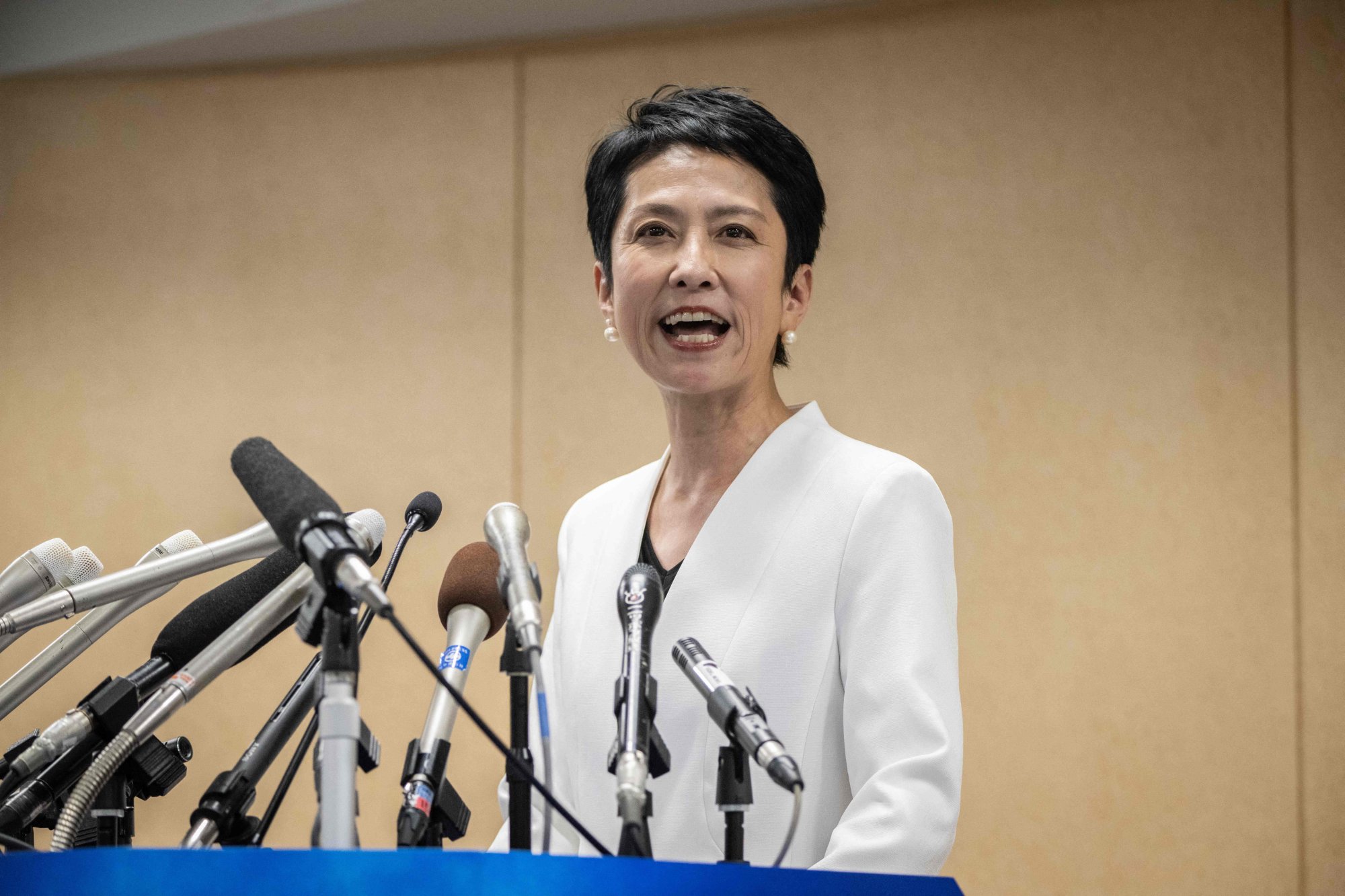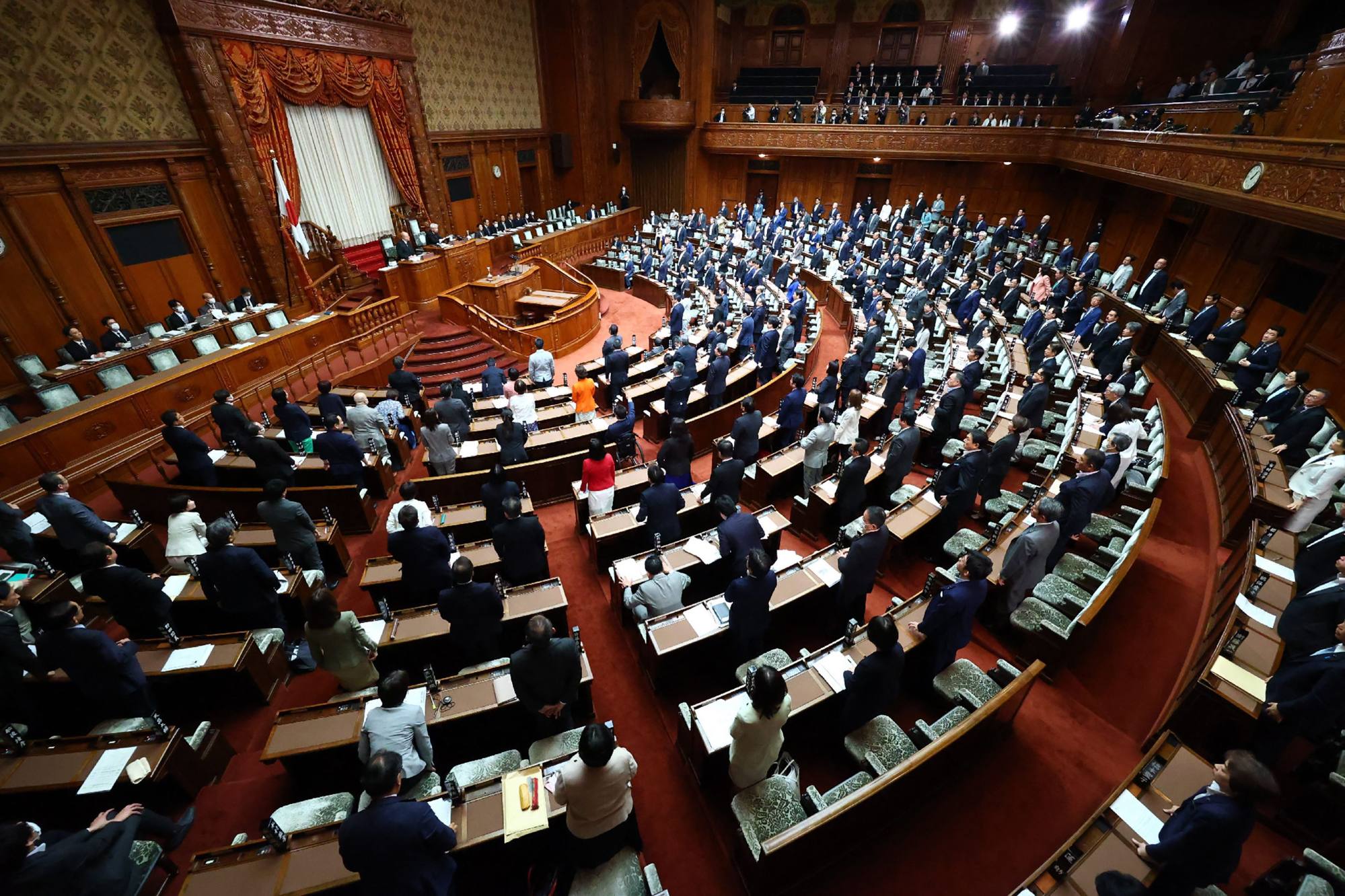If confirmed, the independent would face a challenge from Renho Saito, an upper-house member of the Constitutional Democratic Party of Japan (CDPJ) who is half-Taiwanese and widely known by her first name.

“I want to make a break with old politics and create a metropolitan government that allocates the budget to policies that are truly necessary,” Renho said on Monday at a press conference where she announced her candidacy.
“Tokyo is a big, cosmopolitan city where the voters are more comfortable with women candidates for mayor,” said Hiromi Murakami, a professor of political science at the Tokyo campus of Temple University.
“If you go into a rural area of the country, it would still be deeply conservative and it would be difficult for a woman to even stand as a candidate. That is just the reality we face now,” Murakami told This Week in Asia.
The governor race in Japan’s capital does appear to be an outlier, with a study by the Mainichi newspaper suggesting that women’s representation in politics might be regressing.
A survey by the centrist news outlet, published on May 28, indicated that women account for just 18.1 per cent of the prospective candidates being put forward by the nation’s six major political parties for election to the 289 single-seat constituencies in the lower house of Japan’s parliament, in an election that has to be held by October 31, 2025.
That figure is lower than the 35 per cent target set by the government when it enacted legislation in 2018 to encourage greater engagement among women in politics. A key flaw of the Act on the Promotion of Gender Equality in the Political Field is it contains no sanctions against parties for failing to meet the target, according to analysts.

The Japanese Communist Party is the most women-friendly of the major parties, with women accounting for 33.5 per cent of its 144 prospective candidates. Of the candidates the CDPJ is likely to field, 21.3 per cent of them are expected to be women, according to the survey. By comparison, the proportion of women candidates for the Democratic Party for the People and the Japan Innovation Party is expected to be 21.2 per cent and 18.4 per cent, respectively.
The ruling Liberal Democratic Party has yet to release a list of candidates, partly because of internal turmoil over a slush-fund scandal involving some of its members. Several have resigned from the party, and others have lost their seats in by-elections.
The Mainichi has counted the party’s branch chiefs as a yardstick for likely candidates. If its calculations are accurate, just 8.2 per cent of LDP candidates will be women, with its partner in government, Komeito, faring slightly better at 9 per cent.
Despite the increased involvement of women in politics, Stephen Nagy, a professor of international relations at Tokyo’s International Christian University, said he was somewhat pessimistic about the prospects for change.
“Having two female candidates [for the Tokyo governor race] is not going to come close to addressing the problem of gender inequality in Japanese politics,” Nagy said.
“We are seeing some more female representation at the entry level in companies, universities and politics at the local level, but these people are not moving up the ladder at the same rate as men,” he said.
“Women pay ‘the marriage penalty’ of marriage, having children and losing their position in the workplace. Parties, employers and organisations are just not doing enough to make sure that women can move up … And until that attitude changes, nothing else will either.”

He said, however, that the potential match-up between Koike and Renho was “interesting”.
Renho has the support of the CDPJ and the Japanese Communist Party, which has a strong following among urban voters. Koike has the backing of Komeito and was previously supported by the LDP, but she appears to be distancing herself from the ruling party due to simmering public anger over its scandals.
At the press conference, Renho criticised the LDP, saying she would not tolerate problems involving money in politics and accused Koike of acting “in tandem with the LDP”.
The Yomiuri newspaper reported that she also dismissed Koike’s plan to give 5,000 yen (US$32) every month to Tokyo residents under the age of 18 as an electoral gimmick using public funds, and vowed to provide more support to the city’s homeless population.
Koike has been more circumspect in articulating her plans for the city and has not indicated if she would stand for office again.
“Various people have urged me to continue to serve as Tokyo governor, but I have not made any plans yet,” she told reporters accompanying her on an inspection of facilities on Oshima Island, south of Tokyo, on May 27.
Murakami said: “It could be argued that Koike has blazed a trail as Tokyo governor and that by being elected, she has made it easier for other female candidates. It has even been suggested that the Tokyo governor [position] could be a springboard for her to one day become prime minister.”
Sumie Kawakami, a lecturer at Yamanashi Gakuin University and author of a book on gender issues, said Renho was hoping to build momentum against the LDP over its scandals and emphasise her rival’s links to the party.

The race could have a broader impact on the nation’s politics, according to Kawakami.
“We all know there are not nearly enough women in politics, with numbers here lower than any other developed nation in the world,” she said.
Women account for 10 per cent of the politicians in Japan’s lower house and 20 per cent of the upper house, while the figure in local assemblies is around 10 per cent.
“Koike has done well in her terms so far, while Renho is vocal and has good policies, so I am not surprised she is running,” Kawakami said. “And I do see this election as an opportunity. This could be a dramatic race that has a positive effect on women.”
Koike appears to be the favourite if she were to run again due to her track record, easy-going style and strong communication skills, according to Nagy.
“I do not see anything that distinguishes Renho and I think that Koike’s track record will help her,” he said.
Nagy added that the two women might even set aside their differences and enter into an alliance.
“It would be interesting to see if Koike could somehow pull Renho into some sort of partnership and groom her to be the next woman to sit in the governor’s office. A partnership that guarantees the continuity of female leaders could help bring about broader changes in Japanese politics.”

